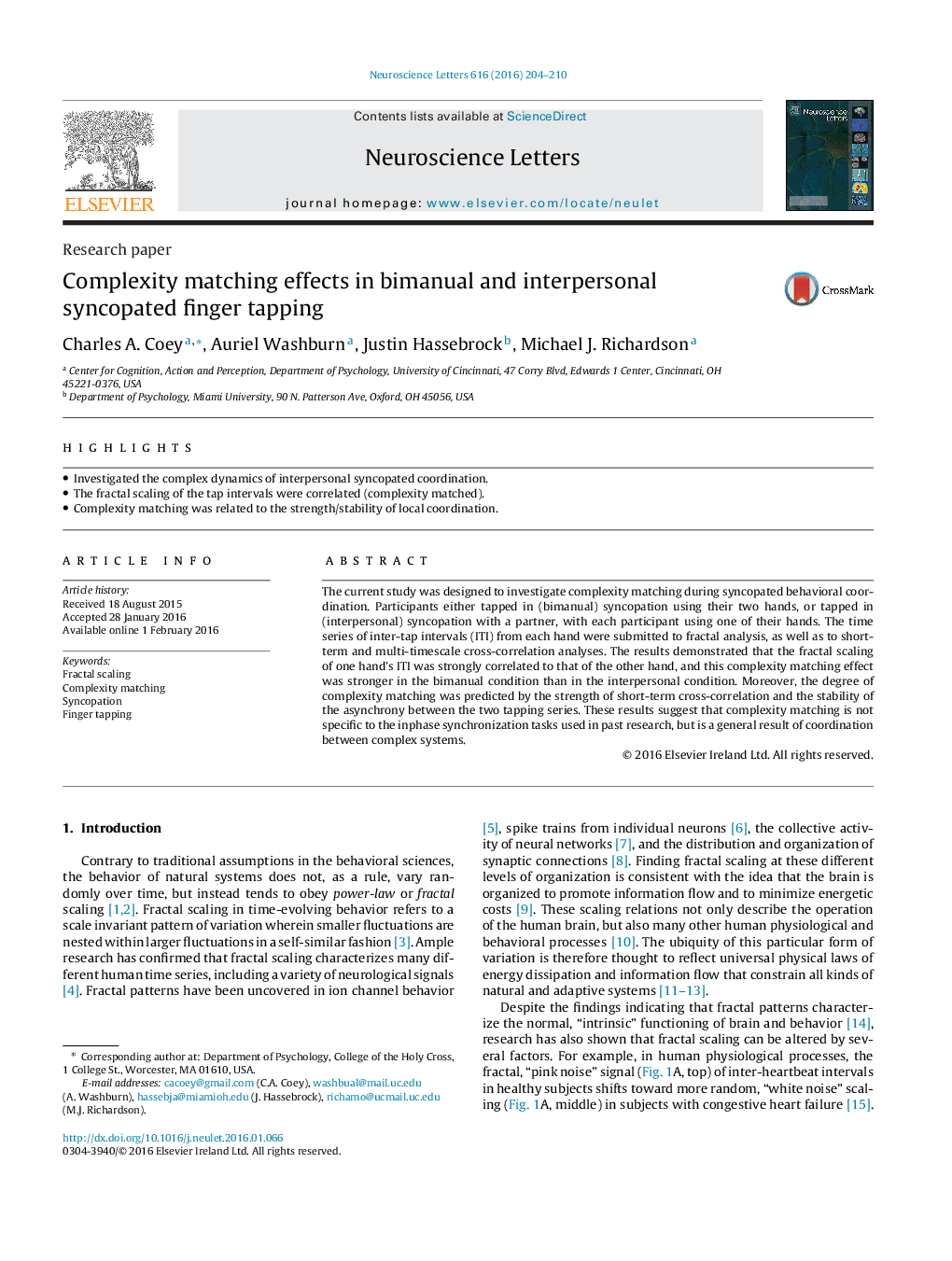| Article ID | Journal | Published Year | Pages | File Type |
|---|---|---|---|---|
| 6279836 | Neuroscience Letters | 2016 | 7 Pages |
Abstract
The current study was designed to investigate complexity matching during syncopated behavioral coordination. Participants either tapped in (bimanual) syncopation using their two hands, or tapped in (interpersonal) syncopation with a partner, with each participant using one of their hands. The time series of inter-tap intervals (ITI) from each hand were submitted to fractal analysis, as well as to short-term and multi-timescale cross-correlation analyses. The results demonstrated that the fractal scaling of one hand's ITI was strongly correlated to that of the other hand, and this complexity matching effect was stronger in the bimanual condition than in the interpersonal condition. Moreover, the degree of complexity matching was predicted by the strength of short-term cross-correlation and the stability of the asynchrony between the two tapping series. These results suggest that complexity matching is not specific to the inphase synchronization tasks used in past research, but is a general result of coordination between complex systems.
Related Topics
Life Sciences
Neuroscience
Neuroscience (General)
Authors
Charles A. Coey, Auriel Washburn, Justin Hassebrock, Michael J. Richardson,
